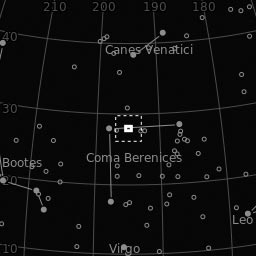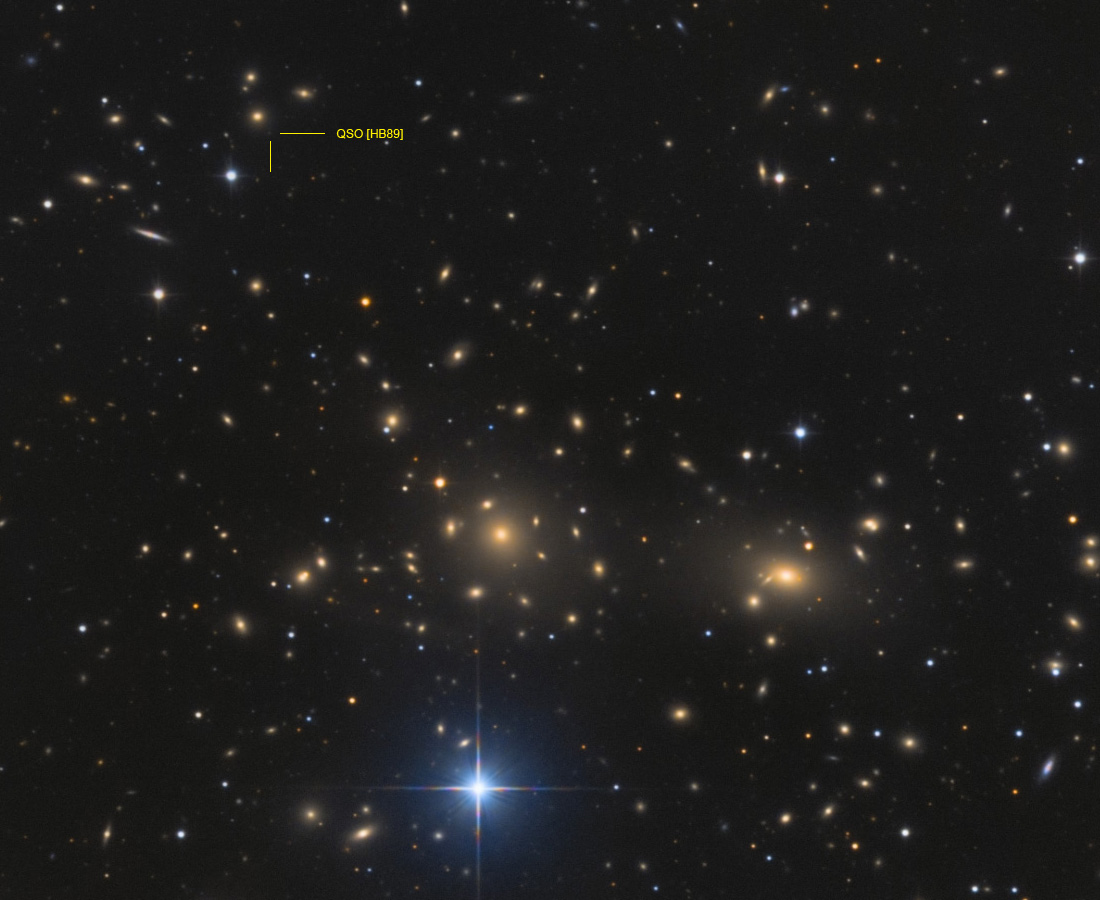
Coma-Galaxy Cluster Abell 1656
1.000 Galaxies in constallation Coma Berenices

1.000 Galaxies in constallation Coma Berenices
The Coma cluster of galaxies is a huge collection of over 1,000 galaxies that occupy an angle of about 3 × 5° in the constellation Coma Berenices. Due to its relative proximity, it played an important role in the study of the large-scale distribution of galaxies and was named Abell 1656 in the catalogue of the famous astronomer George Ogden Abell.
| Object: | Abell 1656 |
| Date of exposures: | 06.05.2018, 07.05.2018, 08.05.2018 |
| Distance: | 300 Mio. Lightyears |
| Exposures: | CLS: 95 x 180", Luminance: 31 x 180", RGB: 87 x 300", Sum: 13,6 hrs. |
| Telescope: | 10'', F4 Newton |
| Focal length: | 1000 mm |
| Filter: | Astrodon LRGB E-Series, Astronomik CLS CCD Filter |
| Camera: | ASI 1600 MMC Pro |
| Guiding: | Off Axis Guider, Lodestar |
| Mount: | EQ8 |
The central area is 2° large and, assuming a Hubble constant, almost 100 megaparsec (about 300 million light years) from the sun. The diameter of the cluster of coma galaxies is about 20 million light years. The coma pile is part of the coma supercluster.
Some brighter spiral nebulae of the coma cluster are already visible in larger amateur telescopes, e.g. NGC 4889, but it has only become clear in recent decades that it has over 1,000 galaxies.
Near the center of space is NGC 4889, a huge elliptical galaxy, and unusually a second one, NGC 4874, both of which are of the cD galaxy type and more than 300 million Lj away from us, but only 1 million Lj away from each other. In the outer regions with less mass, on the other hand, spiral galaxies predominate, in whose spiral-poor regions areas of continuous star formation can be found.
Like other comparable systems, a thin intergalactic gas penetrates the Coma cluster and heats up strongly due to the rapid movement of the clustered galaxies around the central area. In this way it reaches temperatures of many millions of degrees and becomes noticeable by the 1971 for the first time proven emission of intensive X-rays. In addition, however, most of the mass must be so-called dark matter. It cannot be observed directly, but can only be determined by the effect of its gravity.
The brightest 100 "nebulae" of the sky were catalogued between about 1760 and 1780, especially by comet researcher Charles Messier.
The picture also shows the Quasar QSO[HB89] 1256+280. With a redshift of 2.66, this quasar has a distance of 11.3 +/- 1 billion light years. It is thus located shortly after the Big Bang and thus the observable part of the universe:
